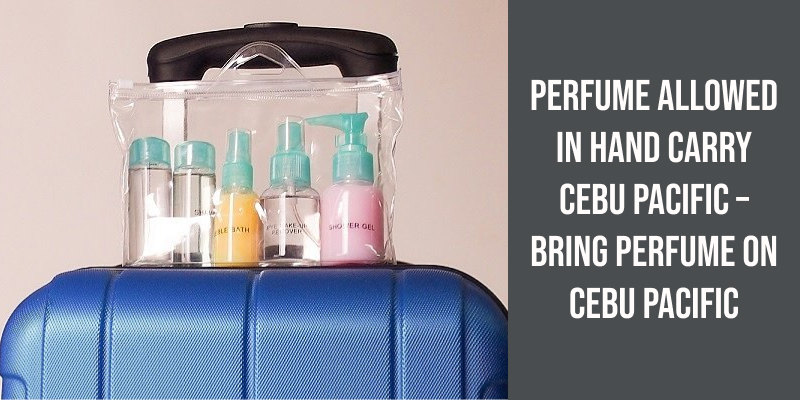Deodorant can technically be used on clothes, but it is not recommended. It is designed primarily for application on your body, specifically your underarms, to reduce body odor. When applied to clothes, it may leave residues or stains, particularly from antiperspirant types that contain aluminum compounds. Moreover, it may not be as effective in controlling odor on clothes as it is on your skin where it can reduce perspiration. Consequently, for clothing, it’s best to use laundry detergents, fabric softeners, or products specifically made for fabric odor control.

Is Deodorant Used on Body or Clothes?
The question of whether deodorant is used on the body or clothes is a common one that’s caused confusion among many people. While there are some similarities between deodorants and body sprays, they’re two different products with distinct uses. In general, most body spray products are spritzed on the body and clothes like a cologne, while deodorants are applied directly to your skin (usually your armpits) in either spray or stick form.
Therefore, while body sprays may contain some deodorizing properties, they aren’t as effective at eliminating body odor as deodorants.
Body sprays are typically sprayed in a general area, such as the chest or neck, and are designed to be used as a spray rather than a targeted application.
Whether in spray or stick form, deodorants provide a targeted solution to this problem, making them an essential part of many peoples daily routines.
Now that we’ve discussed the versatility of deodorant, let’s delve into the debate of whether it should be applied on the body or clothes. While this seems like a simple question, it often sparks a difference of opinion among individuals. Let’s explore the pros and cons of each.
Should Deodorant Be Applied on Body or Clothes?
One of the biggest debates in the world of personal hygiene concerns the application of deodorant – should it be applied on the body or on clothes? This question has puzzled individuals for years, with no clear answer in sight. However, experts suggest that deodorants should be applied anywhere you tend to sweat, rather than just focusing on one specific area.
This includes areas such as behind the knees or inner thighs. It’s important to check the label of your deodorant to ensure that it’s safe to use in alternative areas of your body.
Our body produces sweat in several other areas, and if left unchecked, can lead to bad odor and discomfort.
When sweat accumulates in our clothes, the bacteria present in it break down the fibers and make them smell sour. By applying deodorant to areas of the body that sweat, we can prevent odor from accumulating in our clothes which in turn, increases their lifespan significantly.
However, it’s important to note that not all deodorant brands are created equal. By doing so, you’ll be able to maintain a fresh, odor-free body all day long.
Types of Deodorants and Their Ingredients: Discussing the Differences Between Antiperspirants and Deodorants, and Exploring Ingredients Such as Aluminum, Parabens, and Natural Alternatives.
This article explores the different types of deodorants, including antiperspirants and deodorants, and their ingredients. It also discusses the controversial ingredients of aluminum and parabens and alternative natural options.
It’s important to understand the difference between deodorant and antiperspirant, especially if you’re looking for a solution to combat excessive sweating. While many people use these terms interchangeably, they serve different purposes. As mentioned earlier, deodorant isn’t effective in halting sweat, but plays a key role in masking body odor. Keep reading to find out why antiperspirant is the better option if you want to control sweat and stay fresh all day.
Is Deodorant Used to Stop or Dry Up Sweat?
Sweating is a natural and necessary bodily function that helps regulate body temperature and eliminate toxins. However, excessive sweating or hyperhidrosis can be embarrassing and uncomfortable. While some people may opt to wear layers to hide sweat stains, this isn’t a long-term and practical solution. This is where antiperspirants come in.
Antiperspirants work by blocking the sweat glands, reducing or even preventing excessive sweating altogether. They typically contain active ingredients such as aluminum salts that form a temporary plug in the sweat ducts. This plug reduces the amount of perspiration that reaches the skins surface and helps keep the armpits dry for an extended period.
On the other hand, deodorant works differently and isn’t intended to stop or reduce sweating. Instead, it’s used to mask and prevent body odor caused by the bacteria that break down sweat. Deodorants usually contain antimicrobial agents that kill the odor-causing bacteria, as well as fragrances that provide a fresh scent.
While using antiperspirants is generally safe, some people may experience skin irritation or allergic reactions due to the active ingredients. It’s essential to read the labels carefully and conduct a patch test before applying the product to the entire underarm area. Additionally, antiperspirants aren’t recommended for use immediately after shaving as they may cause stinging or even more significant irritation.
How to Choose the Right Antiperspirant or Deodorant Based on Body Chemistry or Sweat Levels.
- Pay attention to labels that indicate if it’s an antiperspirant or deodorant.
- If you sweat moderately, a deodorant may be enough to keep odor at bay.
- If you sweat heavily, an antiperspirant with aluminum chloride may be more effective.
- Consider trying natural or organic options if you’ve sensitive skin or prefer natural products.
- Experiment with different formulas and brands to find the one that works best for your body chemistry.
- Remember to reapply as needed throughout the day.
Source: Antiperspirant vs Deodorant: What’s the Difference? Which is …
While deodorant and anti-perspirant are indispensable in our daily routine, it’s not just our armpits that are affected. Clothes that come into contact with these products can also be damaged by the chemicals contained in them. So, does deodorant fade clothes? Let’s find out.
Does Deodorant Fade Clothes?
These chemicals, though effective in controlling sweat and odor, aren’t always designed to be gentle on your clothing. In fact, heavy usage of deodorants and anti-perspirants can cause quite the opposite – they can accelerate the fading process of your clothes. This is especially true for dark-colored clothes, which tend to bear the brunt of deodorant stains, leaving them discolored and faded over time.
They may not be immediately noticeable, but over time they can accumulate and form permanent marks on your clothes. These stains are formed when the deodorant and antiperspirant ingredients come in contact with your sweat and mix with natural body oils and dead skin cells. As a result, the stains develop over the fabrics, which can be challenging to remove, especially on delicate fabrics like silk and cashmere.
As a precaution, it’s always best to avoid applying deodorant or anti-perspirant directly on your clothes. Instead, apply sparingly and allow sufficient drying time before dressing up to prevent any transfer. You can also try switching to natural or organic deodorants that are free of the harsh chemicals that cause stains and discolorations on your clothes.
Preventative measures such as avoiding direct application on fabric and washing clothes immediately after use can go a long way in preserving the integrity of your clothes. Opting for gentler and natural products also decreases the risk of staining and discoloration.
How to Remove Deodorant Stains From Clothing
Deodorant stains on clothing can be removed by using various methods such as rubbing with a cloth or sponge soaked in white vinegar, using baking soda, or applying a pre-treatment stain remover before washing the garment.
Proper hygiene is essential to every individual. One of the daily routines is applying deodorant, which helps prevent body odor caused by the bacteria that thrive in the warm, moist environment of our underarms. However, most people don’t know the right way to apply it, which could result in it’s ineffectiveness. To avoid such a scenario, it’s crucial to understand the proper procedure of applying deodorant.
What Is the Proper Way to Apply Deodorant?
If youre using a stick deodorant, make sure to roll it up only a little bit to avoid breaking the product. You don’t want to waste it or make a mess by using more product than necessary. It’s also important to ensure that your underarms are dry before applying deodorant. This will help the product stick better and work more effectively to combat body odors.
There are a variety of deodorants on the market, including those that are designed specifically for sensitive skin, those that offer extra odor protection, and those that are aluminum-free. It’s important to read the labels carefully and choose a product that will work best for your bodys needs.
Many people also like to apply deodorant before bed, as it can be more effective when applied at night. This is because your sweat glands are less active during sleep, which helps the product absorb better. However, if youre sensitive to certain ingredients in deodorant, such as fragrances, it’s best to stick to applying the product in the morning.
This will prevent it from transferring onto your clothing and causing stains or discoloration. If youre in a rush, you can use a hair dryer on a cool setting to speed up the drying process.
Overall, applying deodorant is a simple but important step in your daily hygiene routine. By following these tips and choosing the right product for your needs, you can stay fresh and odor-free all day long. Remember to replace your deodorant regularly to ensure that it remains effective and to prevent any bacterial buildup.
Conclusion
Aside from the unsightly yellow marks and unpleasant smell, the chemicals in deodorant can weaken the fibers of your clothes. It’s best to stick to traditional laundry methods to keep your clothes clean and fresh. If you do need to remove a pesky underarm stain or odor, there are natural and chemical-free alternatives available that are safe for your clothes and skin. It’s important to make informed decisions when it comes to the products we use and their impact on our health and the environment.





